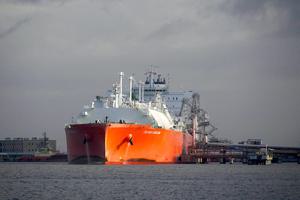An illegal mine in the Renca National Reserve in Brazil in 2017, an area that incorporates two Indigenous lands and is rich in gold and other minerals. Fabio Nascimento / Greenpeace
Mining activities — both large-scale legal concessions and smaller illegal operations — now cover more than 20 percent of Indigenous lands in the Amazon, accounting for 450,00 square kilometers, according to a new report by the World Resources Institute (WRI) and the Amazon Geo-Referenced Socio-Environmental Information Network.
In total, mining is taking place within 1,131 of the Amazon’s 3,653 Indigenous lands, excluding French Guiana and Suriname. Illegal mining, specifically, is affecting at least 370 Indigenous lands, the vast majority of which is occurring in Peru. The report also found that the industry is polluting or using for transit at least 30 Amazonian rivers, which run through or border 88 Indigenous lands.
The presence of mining was also associated with higher tree loss. Indigenous areas with mining activity in Bolivia, Ecuador, and Peru had forest loss at least three times higher than areas without. In Colombia and Venezuela, tree loss was one to two times higher.
“Despite growing evidence that Indigenous peoples are among the world’s greatest environmental stewards, our paper confirms what Amazonian Indigenous leaders have been telling us for years,” Peter Veit, coauthor of the report and director of WRI’s Land and Resource Rights Initiative, said in a statement.
“Across the Amazon, Indigenous territories are under siege from mining, both legal and illegal, and these activities are eroding communities’ ability to protect themselves, prevent deforestation and safeguard ecosystems that are essential to the planet’s well-being.”



